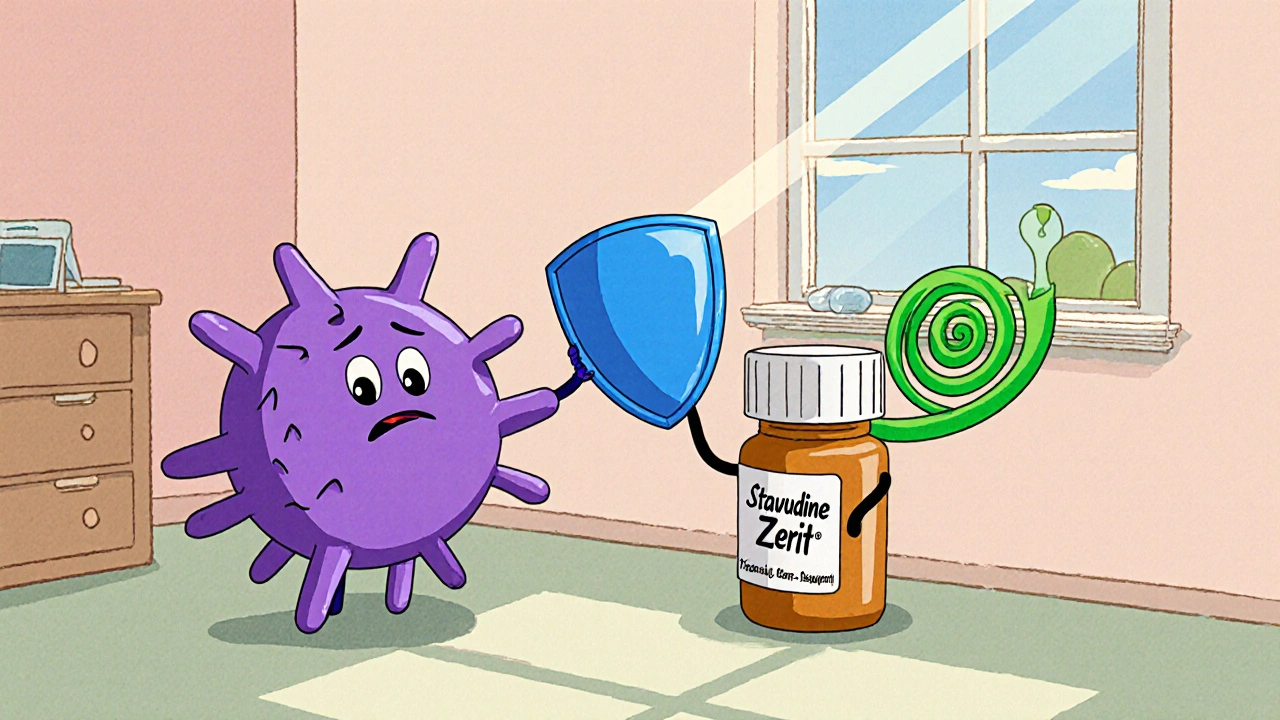When you hear about Stavudine side effects, you’re really looking at the adverse reactions tied to the HIV drug Stavudine side effects, adverse reactions linked to the antiretroviral drug stavudine, a nucleoside reverse transcriptase inhibitor used in HIV treatment. Also known as d4T toxicity, it often shows up in patients on long‑term therapy. The drug itself, Stavudine, a synthetic thymidine analog that blocks HIV replication, belongs to the broader class of Nucleoside reverse transcriptase inhibitors (NRTIs), medications that interfere with the viral enzyme reverse transcriptase. Both stavudine and other NRTIs are core components of antiretroviral therapy, the combination drug regimen used to suppress HIV. Understanding how these pieces fit together helps you spot problems early and act fast.
Stavudine side effects often start with peripheral neuropathy – a tingling or burning sensation in the hands and feet. This happens because the drug causes mitochondrial toxicity, damage to the cell’s energy factories that leads to nerve irritation. Another common issue is lipoatrophy, where fat disappears from the face, arms, or buttocks, giving a gaunt appearance. Pancreatitis, though rarer, can flare up with severe abdominal pain and should trigger immediate medical attention. Liver enzymes may rise, signaling hepatic stress, and the drug can also raise blood lipids, increasing cardiovascular risk. All these symptoms are linked through the underlying mechanism of NRTI‑induced mitochondrial dysfunction, a classic example of how one drug class can produce a cascade of side effects.
Managing these reactions isn’t just about stopping the pill; it starts with regular monitoring. Baseline nerve exams, liver function tests, and lipid panels set a reference point. If peripheral neuropathy appears, doctors often lower the stavudine dose or switch to a less neurotoxic NRTI like tenofovir. For lipoatrophy, cosmetic interventions can help, but the primary fix is to replace stavudine with a newer agent that spares fat tissue. Nutrition, vitamin B‑complex supplements, and physical therapy also ease nerve pain. Importantly, patient education – telling people what to watch for and when to call their clinician – cuts the chance of severe complications.
Why do some patients experience more intense side effects than others? Genetics, age, and pre‑existing conditions all play a role. Those with diabetes or a history of alcohol abuse are especially vulnerable to neuropathy. Younger patients often tolerate stavudine better, while older adults may see quicker fat loss. The drug’s dosage matters, too – higher daily doses increase the risk of mitochondrial damage. Because of these variables, clinicians tailor HIV regimens to each person’s risk profile, often favoring newer NRTIs when toxicity risk outweighs benefits.
Below you’ll find a curated set of articles that dive deeper into each of these topics – from detailed guides on recognizing peripheral neuropathy to step‑by‑step comparisons of stavudine versus newer HIV medications. Whether you’re a patient trying to understand what’s happening in your body, a caregiver looking for practical advice, or a health professional seeking up‑to‑date safety data, the collection offers clear, actionable insights to help you navigate stavudine side effects and make informed treatment choices.
